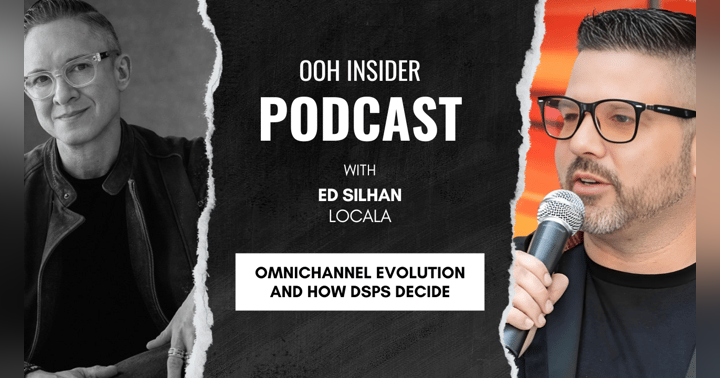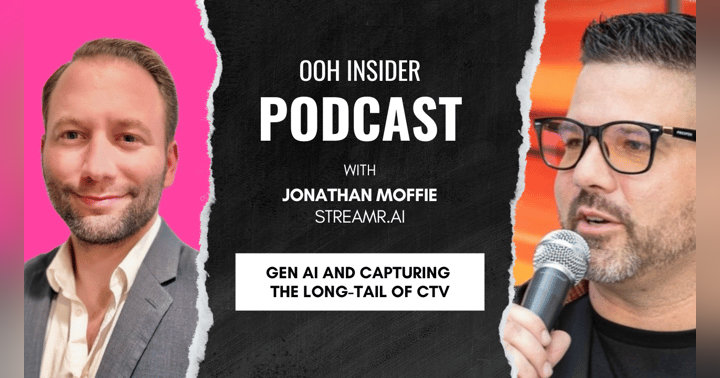In the world of advertising, technology has revolutionized the way marketers reach their target audience. One such innovation is programmatic advertising, which has been widely adopted in the digital space. But did you know that programmatic advertising has also made its way into the out-of-home (OOH) advertising industry? In this comprehensive blog, we will explore what programmatic OOH advertising is, how it works, and why it matters in today's advertising landscape.
What is Programmatic OOH?
Programmatic OOH refers to the automated buying and selling of advertising space on digital billboards, screens, and other OOH media formats. It enables advertisers to reach their target audience more effectively by leveraging data-driven insights and real-time decision-making.
Traditionally, OOH advertising was limited to static billboards and fixed ad placements. However, programmatic OOH has transformed this medium into a dynamic and flexible channel, capable of delivering highly targeted and personalized campaigns.
The Power of Audience Targeting
One of the key benefits of programmatic OOH is its ability to leverage audience data for precise targeting. By integrating various data sources, such as location data, demographic information, and even online behavior, advertisers can identify and reach their desired audience segments more accurately.
For example, a coffee brand might use programmatic OOH to target commuters in specific areas during morning rush hour. By analyzing mobile data and traffic patterns, they can determine the optimal locations and times to display their ads, ensuring maximum exposure to their target audience.
Moreover, programmatic OOH allows for real-time optimization and retargeting. Advertisers can monitor campaign performance and make adjustments on the fly, ensuring their messages are reaching the right people at the right time.
DID YOU KNOW?
The real world is now more targeted than the internet. Seriously.
Because of online privacy restrictions and advancements in commercial real estate data, deterministic, location intelligence insights can be used for planning all offline media (radio, TV, OOH, direct mail) and via all buying types (programmatic and direct).
This 17:46 episode teaches you about exactly how to do that for yourself.
Campaign Efficiency and Flexibility
Programmatic OOH offers unparalleled campaign efficiency by automating the buying and selling process. Advertisers can easily manage their campaigns through a single platform, eliminating the need for manual negotiations and paperwork.
This automation not only saves time but also reduces the risk of human error. Advertisers can set specific targeting parameters and budgets, allowing the system to optimize ad placements for maximum impact.
Additionally, programmatic OOH provides advertisers with the flexibility to adjust their campaigns based on real-time insights. If certain locations or time slots are not performing well, they can quickly shift their budget to more promising opportunities. This agility ensures that advertisers are making the most of their ad spend and achieving their campaign goals effectively.
Bridging the Offline and Online Divide
Programmatic OOH has the unique ability to bridge the gap between offline and online advertising. By integrating with other digital channels, such as mobile and social media, advertisers can create cohesive and integrated campaigns that deliver a seamless brand experience.
For instance, a clothing retailer could use programmatic OOH to promote a limited-time sale on billboards, while simultaneously running targeted mobile ads offering a discount code. This multi-channel approach maximizes the reach and impact of the campaign, engaging consumers both offline and online.
The Future of OOH Advertising
As technology continues to advance, programmatic OOH is poised to become an integral part of the advertising landscape. Its ability to enhance audience targeting, and campaign efficiency, and bridge the gap between offline and online marketing makes it a powerful tool for advertisers.
However, it's important to remember that programmatic OOH is only as effective as the data it relies on. Advertisers must ensure they have access to reliable and accurate data sources to drive successful campaigns.
With the right strategy and execution, programmatic OOH has the potential to revolutionize the way brands connect with their target audience, leading to more impactful and memorable advertising experiences.
The Benefits of Programmatic OOH
1. Enhanced Targeting Capabilities
One of the most significant advantages of programmatic OOH is its enhanced targeting capabilities. By leveraging data insights and audience segmentation, marketers can ensure that their messages are seen by the most relevant audience. For example, a fitness apparel brand can target gym-goers during peak hours in their local area, maximizing the chances of engagement and conversion.
2. Real-Time Optimization
Programmatic OOH enables real-time optimization, allowing marketers to adapt their campaigns on the fly. With access to real-time data, advertisers can make informed decisions about which ads to display and where. They can adjust their messaging based on consumer behavior and even respond to external factors such as weather conditions or local events. This agility ensures that campaigns stay relevant and impactful, driving better results.
3. Cost-Effectiveness
Traditionally, OOH advertising required significant upfront investment and relied on fixed contracts. Programmatic OOH disrupts this model by offering more flexibility and cost-effectiveness. Marketers can now buy ad space on a real-time bidding basis, optimizing their budgets and ensuring they only pay for the impressions that matter. This democratization of OOH advertising opens up opportunities for businesses of all sizes to leverage the power of this medium.
4. Integration with Digital Channels
Programmatic OOH seamlessly integrates with digital channels, creating a holistic marketing strategy. By combining OOH with online, mobile, and social media campaigns, marketers can amplify their messages and reinforce brand recall. For example, a retail brand can display a billboard showcasing a new collection and simultaneously run a targeted digital campaign to drive online traffic and sales.
Future Outlook and Conclusion
Programmatic OOH is already changing the way marketers engage with consumers. And as technology continues to advance, we can expect even more sophisticated targeting capabilities, increased automation, and seamless integration with other channels. The ability to deliver highly personalized and contextually relevant messages to consumers in the physical world will unlock new growth from ad spend and strengthen engagement with audiences.
However, it is crucial to remember that programmatic OOH should complement, not replace, other marketing strategies. It's a method for buying and should be integrated into a comprehensive marketing plan that aligns with business goals and target audience behaviors.
As the advertising landscape evolves, programmatic OOH presents an exciting opportunity for marketers to reach consumers in a more targeted and impactful way. By harnessing the power of data, automation, and real-time optimization, marketers can unleash the true potential of programmatic OOH and stay ahead in an increasingly competitive market.
DID YOU KNOW?
The real world is now more targeted than the internet. Seriously.
Because of online privacy restrictions and advancements in commercial real estate data, deterministic, location intelligence insights can be used for planning all offline media (radio, TV, OOH, direct mail) and via all buying types (programmatic and direct).
This 17:46 episode teaches you about exactly how to do that for yourself.



